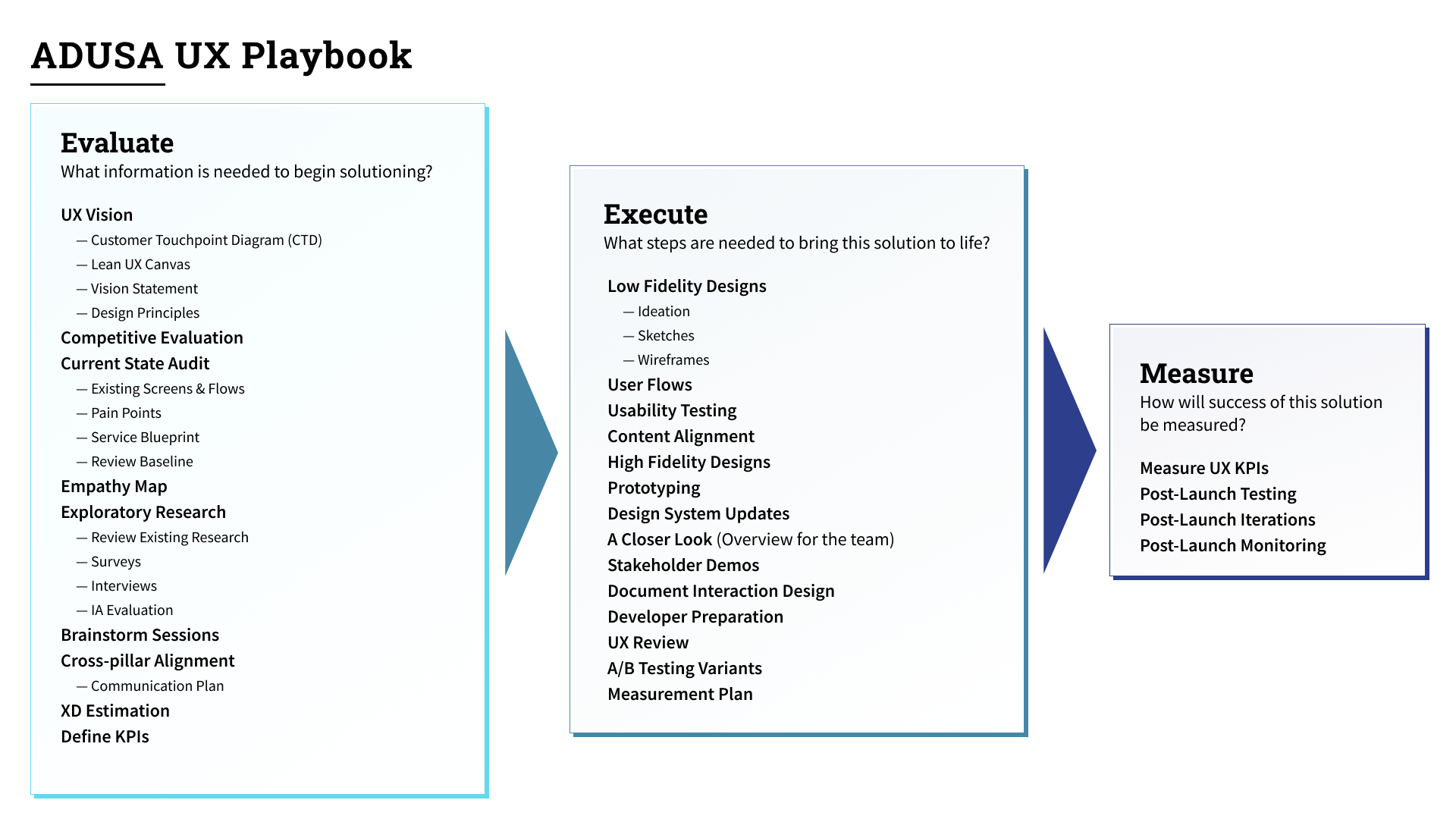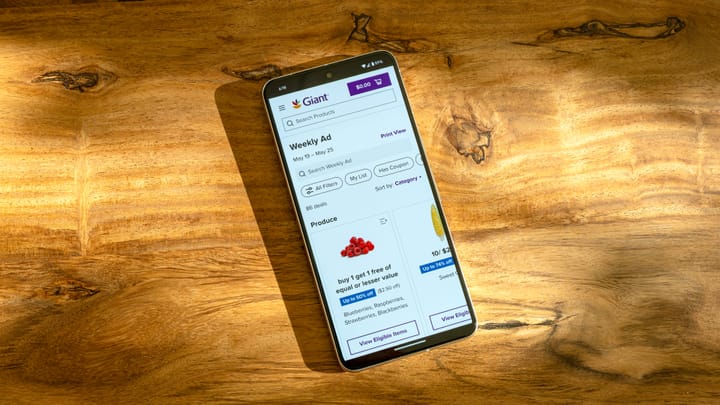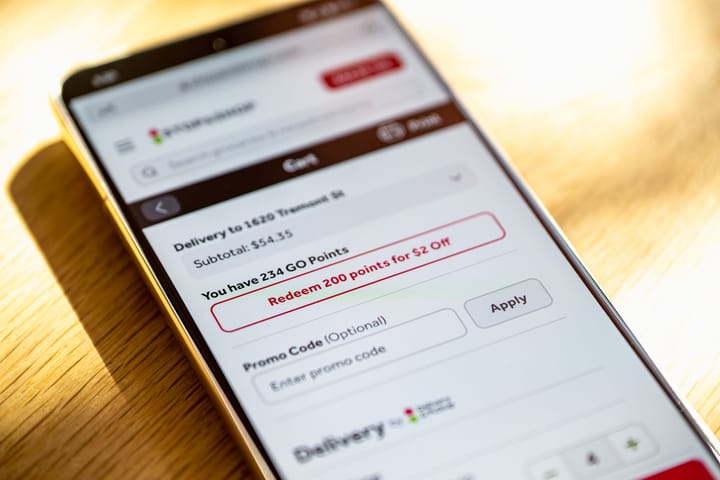Quick Wins: Improving Designer Efficiency with DesignOps
I developed a "UX Playbook" of activities to help our designers think through which would best define success for their project.

As part of standing up our DesignOps practice at ADUSA, I collaborated with other Sr. Managers to develop a "UX Playbook" of activities to help our designers think through which UX methodologies would define success for their project. Our UX designers at ADUSA are given a large amount of autonomy to intake a problem statement or customer pain point and ideate freely on what the best customer and business solution may be. By embedding this playbook in our process, we ensured consistency in process across our growing team.

The funnel of Evaluate, Execute, and Measure corresponds to our product development stages and maintains consistency across disciplines. When beginning a feature or a redesign, we must begin by asking the question: What information is needed to begin solutioning. This stage in the evaluation process relies heavily upon research, but creates a framework to reference throughout the design phase.
After spending time to fully understand the problem, ecosystem, and the customer intent, we move on to the execution phase and ask, “What steps are needed to bring this solution to life?”. Without a strong customer-centric foundation, everything here would fall flat, however, by building our design approach upon research and analytics, we can confidently point back to how our solution solves a customer need. By the end of this process, we have produced the typically assumed UX artifacts of high-fidelity designs, advanced prototypes, and stakeholder presentations.
Lastly, and most often overlooked by designers earlier in their careers, we develop a measurement plan defining, “How will success of this solution be measured?”. Product KPIs and UX KPIs are a venn diagram, but some things are mutually exclusive. Here, we consider another playbook of honing in on UX metrics for success, indicators such as time on task, feature utilization, back button usage, task success rate, etc. This phase often leads to a recurring loop back to a/b testing and further iteration.
By defining a UX playbook at ADUSA, we took some of the guesswork out of creating a successful feature launch and applied consistency to the design process across our organization.


